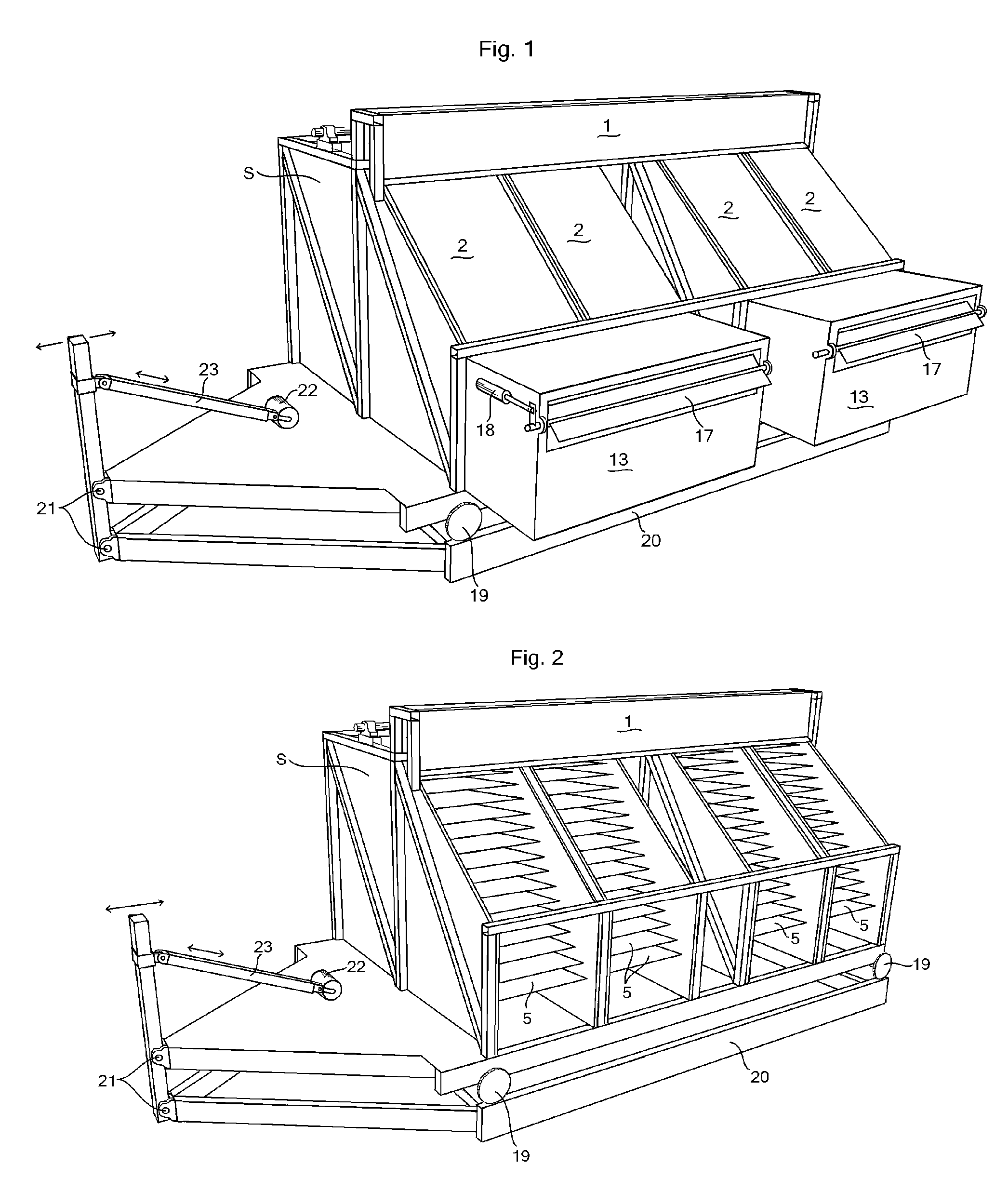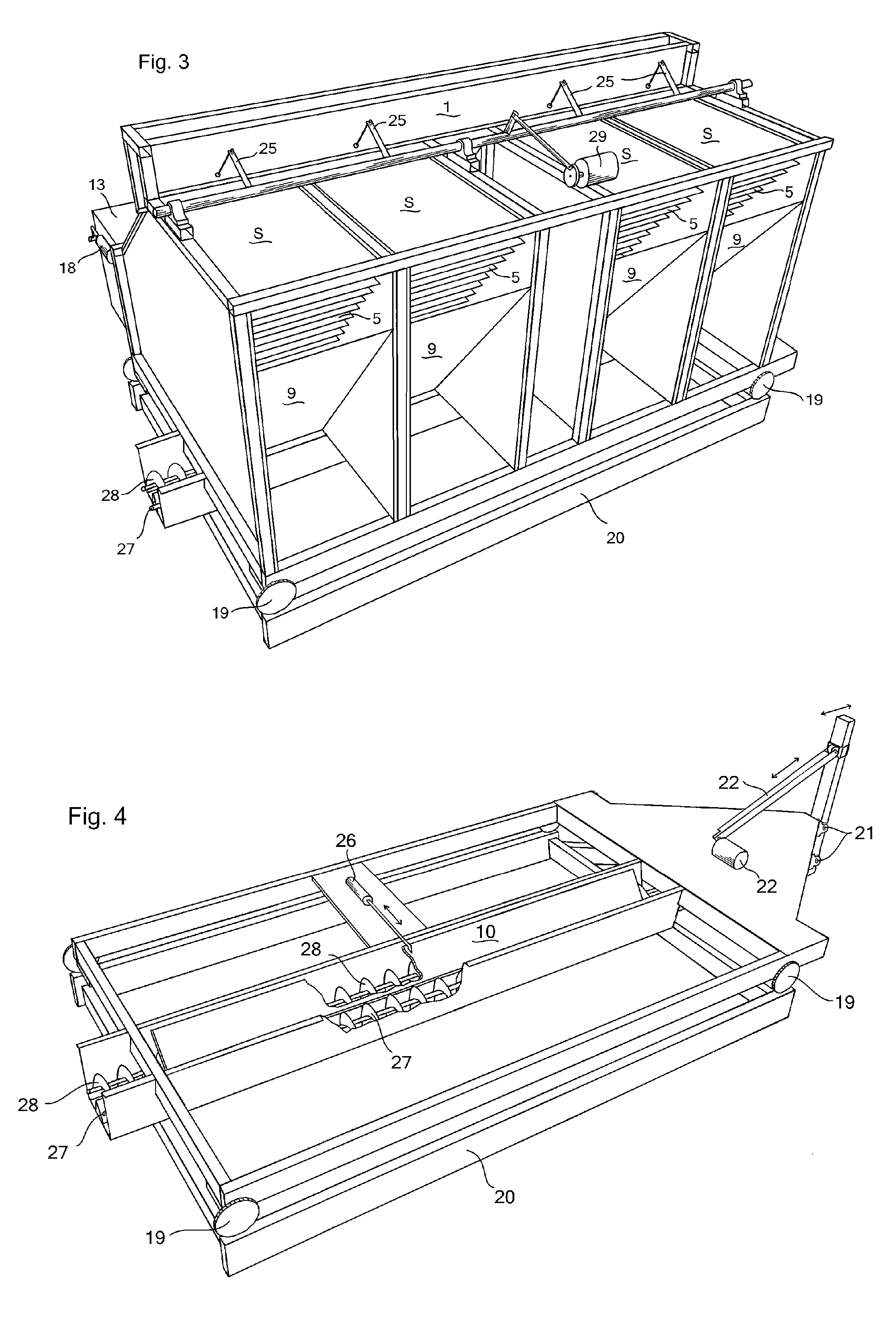Method and Apparatus for Separating Oil Seeds
a technology of oil seeds and methods, applied in biochemistry apparatus and processes, grading, applications, etc., can solve the problems of not applying to grain and oil seeds, environmental problems, and production of additional costs, so as to improve the quality of canola crops, improve the ripe count, and reduce the differential rolling resistance
- Summary
- Abstract
- Description
- Claims
- Application Information
AI Technical Summary
Benefits of technology
Problems solved by technology
Method used
Image
Examples
Embodiment Construction
[0050] The apparatus and method of this invention are illustrated in the figures and described in a preferred embodiment with application to separation of canola seeds but not so limited.
[0051] The method of the present invention is to feed the given oil seed or grain to be separated onto downwardly declined flat plates so as to allow each seed to roll generally independently down the length of the plate and to be separated by rolling at different rates according to the ripeness of the seeds.
[0052] On the basis that ripe seeds roll differentially than unripe seeds, the seeds are collected at timed intervals in separate collection troughs. Ripe seeds are separated as the earliest to roll off the flat plate. Debris and unripe seeds that roll more slowly, remain on the flat plates until they are blown off and are collected into another collection trough. The machine cycles through three timed stages: the feed stage; the run stage; and the clean stage.
[0053] As shown in FIG. 6, pre-c...
PUM
| Property | Measurement | Unit |
|---|---|---|
| Time | aaaaa | aaaaa |
| Flow rate | aaaaa | aaaaa |
| Gravity | aaaaa | aaaaa |
Abstract
Description
Claims
Application Information
 Login to View More
Login to View More - R&D
- Intellectual Property
- Life Sciences
- Materials
- Tech Scout
- Unparalleled Data Quality
- Higher Quality Content
- 60% Fewer Hallucinations
Browse by: Latest US Patents, China's latest patents, Technical Efficacy Thesaurus, Application Domain, Technology Topic, Popular Technical Reports.
© 2025 PatSnap. All rights reserved.Legal|Privacy policy|Modern Slavery Act Transparency Statement|Sitemap|About US| Contact US: help@patsnap.com



